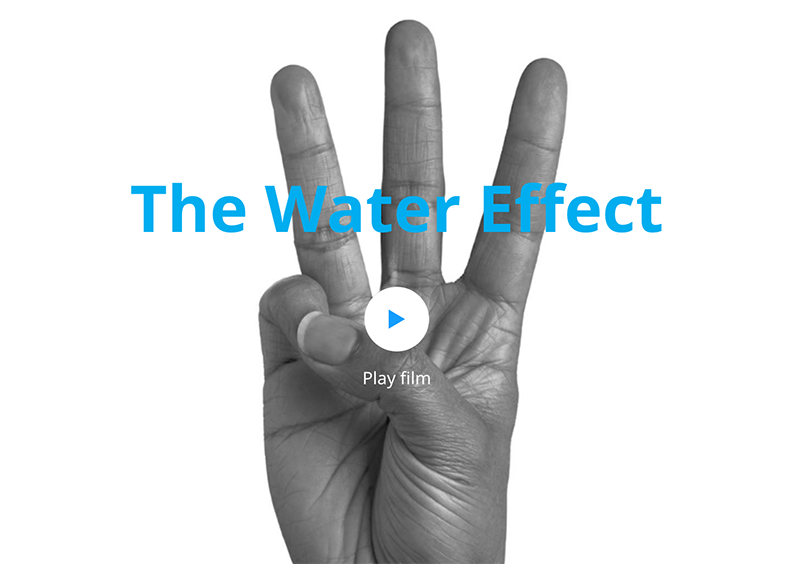By Zinta Jaunitis, MA Visual Arts: Illustration, Camberwell
I left this event with great insight into the creative and positive ways a charity such as WaterAid approaches serious global issues. If you are interested in or studying areas in communication, branding, ethics and sustainability than this event was for you. Below is a summary for those who couldn’t make it.
Firstly, what is WaterAid?
WaterAid is an NGO and charity that raises awareness and solutions for basic things we take for granted. Their goal is; clean water, decent toilets, good hygiene for everyone, everywhere by 2030.
Most of their work is about raising awareness, raising money, calling on governments to make change and pushing that to the top of their agenda, as well as delivering programmes that support their goals in countries around the world. Watch a short video about it HERE.
Emma Mitra, Senior Communications Officer and Hannah Jarratt, Senior Communications Manager are part of a Brand and Creative team at WaterAid. They gave us an insight into the creative processes that led to WaterAid’s new communications campaign – The Water Effect.
What is The Water Effect?
To make a bigger impact WaterAid decided to speak globally with one consistent message and story – an annual story was created. The story for 2018 is called The Water Effect. The Water Effect is about the transformational powers of water sanitation. So, all of the stories that WaterAid are telling in 2018 are about how people’s lives have transformed by access to clean water and good hygiene and sanitation. Watch a short video about it HERE.
What impressed me was WaterAid’s striving for authenticity when it came to communicating this and other campaigns. For example, they have an in-house film and photography team which includes a team of people called ‘voices from the field’. They are photographers and communication specialists that are in the field and are involved in local country programmes. They live in these countries purely to create and deliver content. They seek an ethical approach, without misrepresenting or exploiting, and as such shoot with dignity and hope. It works something like this; a team in WaterAid will brief a ‘voices from the field’ team and say, I would like a case study from Mali of a good working toilet that has been built. We would like to hear from the person who made it, and we would like to hear from someone in that village. Based on this brief ‘voices from the field’ in Mali would create content using the communities in which they are involved. WaterAid are unique in this way as most charities buy their images from Getty or send a team who parachute in and out to get the content.
I was reminded of my previous studies in Visual Culture. In one assignment I examined the role of ethics in ethnography through the photographic works of Artist/Activist Fazal Sheikh. I dug out the essay and found this relevant quote by him;
“It is one thing to photograph a group of people, it is another to try to understand them. For that you need time, patience, and an innate respect for difference – the gulf between your own religion, politics, economic status, language, and those of the person in front of you.”
To actually capture a true portrait of a people I can see that WaterAid are striving for this understanding in their work. WaterAid respond to challenges and criticism with positive messaging and engage with publicity, programmes and partnerships that will better their cause. Emma and Hannah highlighted a few;
Stunts
Stunts would accompany an event or around the time of reporting. In 2010 WaterAid’s ‘Dig Toilets Not Graves’ campaign in Trafalgar Square – an installation of 167 spades symbolising the number of children who die from diarrhoea in the developing world every hour.
Partnerships
WaterAid just won new partnerships with Armani and Wimbledon. Big established brands what to be seen changing their business structure in socially responsible ways, and the authenticity of what WaterAid do is an asset to the companies who partner with them.
Student initiatives a student initiative with UAL
UAL student and fine artist, Daumants Brunins was awarded first prize (a fancy camera) for his work submitted in response to WaterAid’s creative brief – create a unique, ground-breaking and creative public campaign product to support WaterAid’s communication of the water, sanitation and hygiene crisis. The product was to focus on connecting the public to the people that need services and the chance for a better future.
WaterAid’s communication channels and publicity list goes on! If you want to learn more explore their website or contact Emma and Hannah directly. They are young, aware, socially minded individuals with whom you can have an open conversation with.
Find out more about the Wateraid partnership with Postgraduate Community, inlcuding:
- Keynote talk: Marcus Missen Director of Communications and Fundraising at WaterAid
- Design Challenge
- Wateraid and power of images
- How to volunteer



